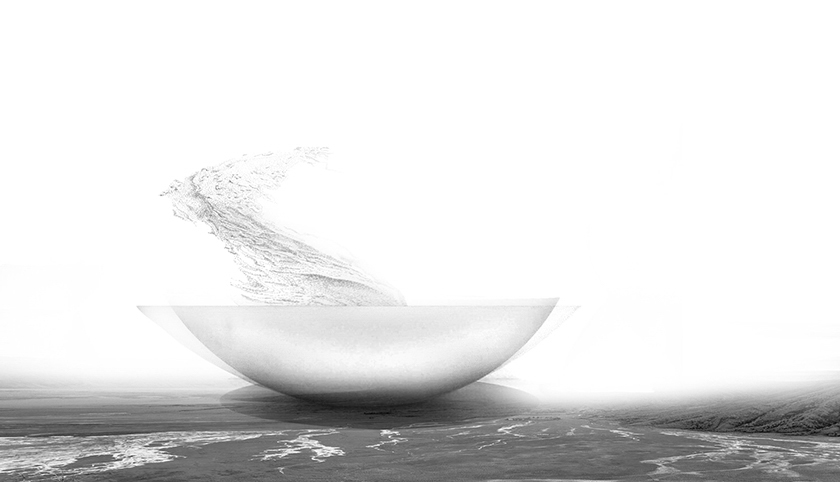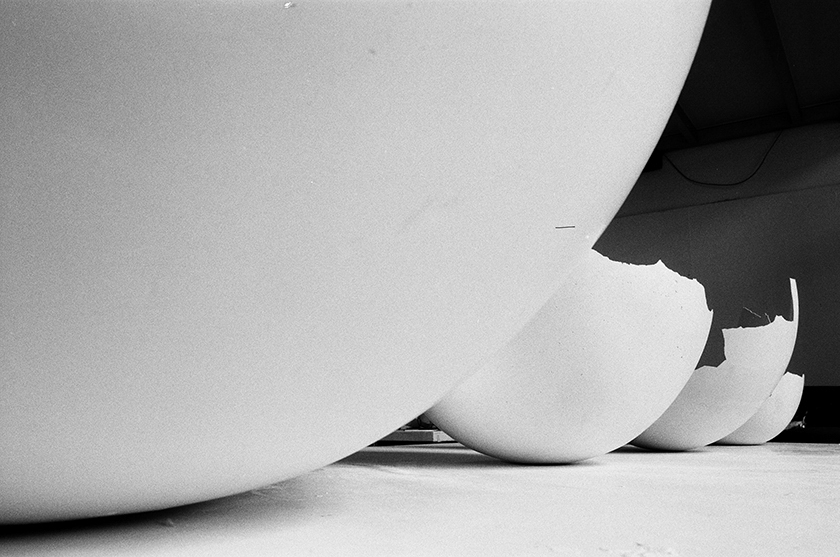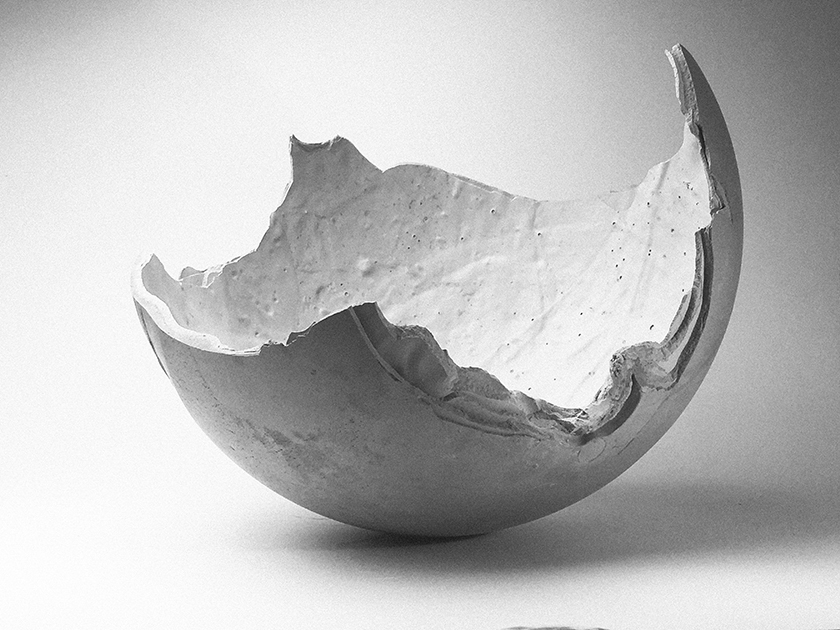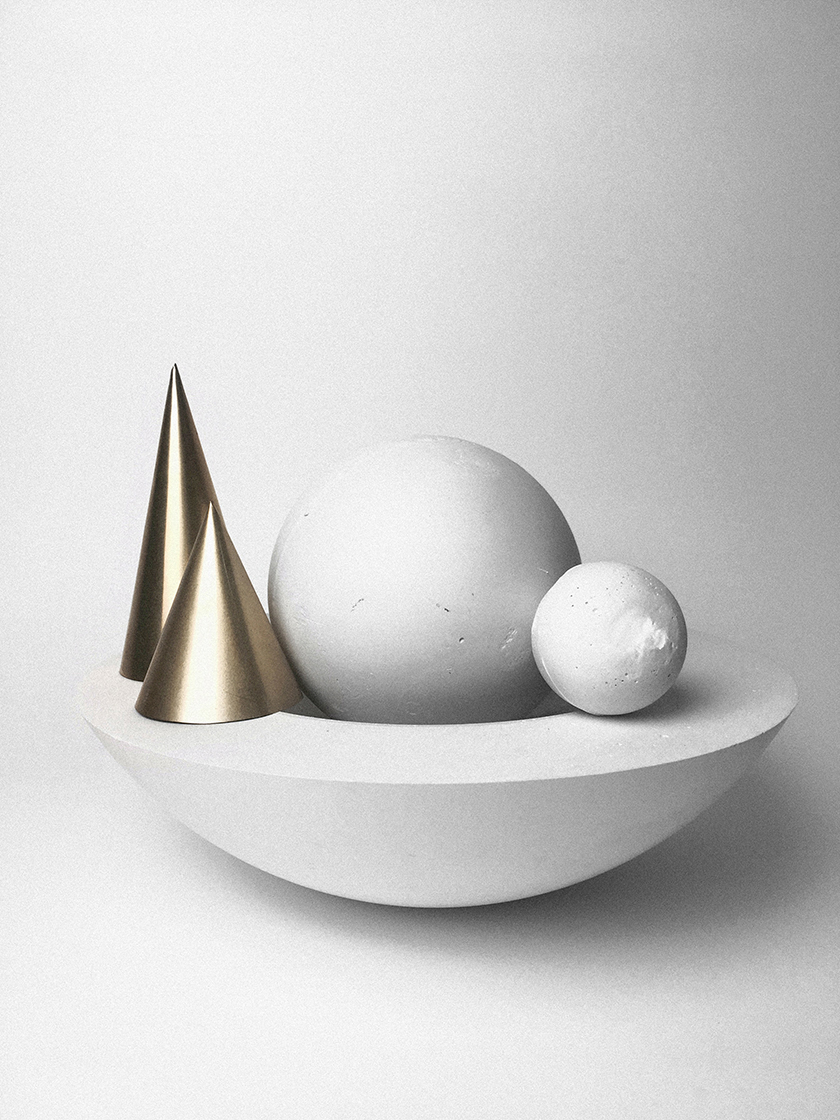
“the bowl” 2017, photo – drawing collage
At the beginning it was a chaos, ever trembling and shaking free-floating islands on the ocean, with no stable ground and peace for life. So, the man asked the gods to create a mountain, which would pin down the island and stop it from trembling. The gods heard the wish of the man, and carried the holy Meru Mountain all the way from India to Java, scattered it into many fragments and created the volcanoes spanned across the island, which sealed whit its erupting lava all floating islands together, brought a balance and the beginning for new life.

This legend from the old Javanees manuscript from the 15th century describes the mythical origin of Java island, which is still vivid and sacred for the culture and religion of the local people. They believe, that the constant earthquakes and volcano eruptions are signs of the gods and their perpetual efforts to keep the island sealed together.
From the scientific point of view, the Java island and the whole Indonesian region did indeed emerge from the volcanic eruption, and multiple layers of lava forming a ground within the last 2–3 million years. Java’s volcanic topography is the fundamental factor of its entire ecosystem, where its flared-up ashes spread across an entire island and feed the soil with nutritious elements for the vegetation to grow, forming impenetrable tropical rainforest and one of the richest and diverse ecosystems on earth. This is only one of over 20 thousand islands stretching from Asia to Australia, but in its interior, it holds ecological mysteries, which has astonished scientists for generations.
The link between the mythological and scientific origin of Java is an essential focus and concept for a possible land art intervention on the island. It is imagined as a concrete shell, similar to a form of a bowl in a diameter of approximately 7 meters wide, which would be erected on a flat landscape in a distance to one of the active volcanos. The bowl would act as a device, which collects falling ashes from a constant eruption of the volcano. In the course of the time, as fallen ashes, rainwater and the dust of the soil will start to solidify and layer by layer will fill up the bowl, forming a possible soil for the vegetation to grow – as a small independent creation of life in a form of art.
The shape of the bowl acts not only as a container for soil and ashes, but it is also a tactical reference to a mythological mountain. The structure has no fixed foundations, just an empty spherical surface swaying on the flat ground as long as it takes, maybe years, maybe decades, until the ashes will fill it up. In a similar way, resembling ever trembling and shaking free-floating island, eventually brought by the “mountain” into the balance.


experimental models, plaster